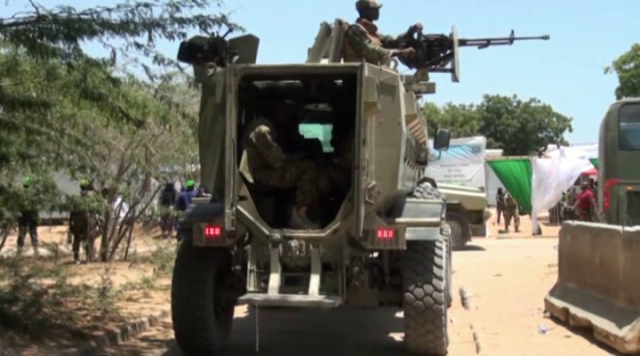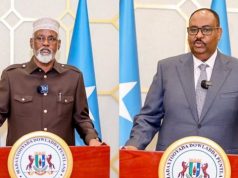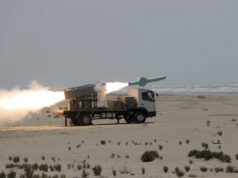
The African Union Mission in Somalia (AMISOM) should have completed its second phase of military force downsizing as part of its exit strategy by today, 28 February. But serious ongoing security threats posed by al-Shabaab and other armed groups raise questions about the timing of the drawdown and the implications for Somalia’s security. Burundi’s opposition to troop numbers being reduced has also delayed this part of the exit strategy.
AMISOM has been operating in Somalia for 12 years. Its principal mandate is to reduce threats posed by al-Shabaab and other armed opposition groups, and to support stabilisation efforts in a complex and dangerous environment. To an extent, AMISOM has achieved this. The mission, along with its Somali counterparts and international partners, has created a level of stability which has allowed local and global actors to implement many political and peace initiatives.
This was possible only after al-Shabaab’s hold on major population centres across southern and central Somalia was reduced. The country has made significant progress since 2012. At the least, government structures at federal and state levels have been established. Al-Shabaab continues to launch deadly attacks on AMISOM and its local and international partners
The progressive reduction of military forces has been in the making for some years, but it’s always been closely tied to the mission’s unclear exit strategy. The AU-United Nations (UN) Joint Review of AMISOM in 2015 recommended a gradual and condition-based shift from military- to police-led security in Somalia. Both the AU Peace and Security Council (PSC) and the UN Security Council (UNSC) endorsed the recommendation. As of 30 October 2018, the mission was set to downsize its military strength by 2 000 in two phases. Police numbers were to be simultaneously increased from 540 to 1 040, including five Formed Police Units with 160 officers each.
In the initial phase, all the military contingents reduced their forces by 4% to meet the first 1 000-soldiers drawdown. However the planned second drawdown was delayed. This was mainly because of Somalia’s extremely volatile security situation and slow progress in the development of its security sector. The mission has been militarily heavy since it began, with soldiers still accounting for over 95% of the total force strength.
In the second half of 2018, both the AU Peace and Security Council and the UN Security Council postponed the deadline for completing the second phase of force reduction. The cut-off date was then set for 28 February 2019. The drawdown plan formed the crux of AMISOM’s exit strategy, which sees full handover of security responsibilities to Somalia’s government and planned exit by December 2021. This is preceded by a condition-based further drawdown of troops between 2019 and 2021. AMISOM has always been militarily heavy, with soldiers still making up over 95% of the total force.
However the timing of AMISOM’s drawdown raises concerns as al-Shabaab continues to launch deadly attacks on the mission and its local and international partners. Compared to the period between 2011 and 2015, major offensive campaigns against al-Shabaab have stalled in the past three years. Despite recent military campaigns, the group still controls about a fifth of Somalia’s territory, mainly rural areas and small towns in the southern and central parts. Islamic State is also growing in Somalia.





